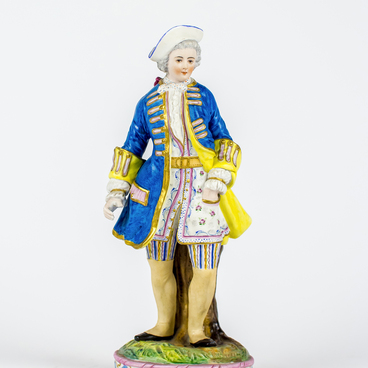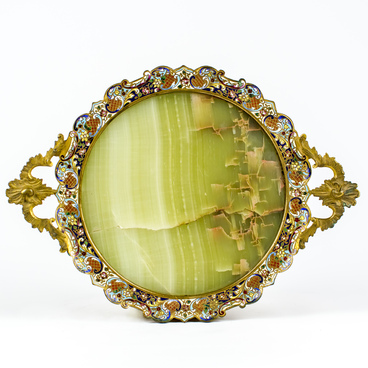The sculpture “A huntress with a rifle and game” was made at the Alexey Popov porcelain factory in the Moscow Governorate, Dmitrovsky district, in the village of Gorbunovo.
The history of one of the leading porcelain factories in Russia of the 19th century began in 1804. Karl Melly, a former commissioner of the famous Gardner’s porcelain factory, built his own factory. In 1811, seven years later, he decided to sell the factory to Alexey Popov, a merchant of the first guild.
Popov was eager to proceed from copying other people’s works to producing figurines according to original designs. As the factory just started working, the masters generally copied the well-known porcelain samples from France and Germany and they used the samples that were produced at the Imperial Porcelain Factory.
However, during the first decade of factory operation, Popov’s masters invented a new way of making products. The company invented an unusual composition of porcelain with kaolin, developed unique shapes and came up with its own color scheme and style of painting.
The colorful floral compositions in mouchel medallions were a distinctive feature of the art style of the Popov factory. Mushels were placed against the bright background of blue, green, red, yellow colors. Gilding was frequently used in painting.
In 1815, the Northern Post magazine published a note about the then newly founded factory. It reported that the fledging enterprise had attained great skill in producing porcelain goods, which “do honor to the taste of the factory owner.”
To maintain and improve the high artistic level of production, a school for painters and one of the best laboratories of paints were opened at the factory.
In addition to fine figurines and expensive products for aristocracy, the Popov factory produced the best, practical and inexpensive, common tableware: tea pairs, teapots, and saucers for sugar. The overall production was impressive. In 1859, the factory produced 19 thousand teapots, almost 80 thousand teacups, and 15 thousand saucers.
The history of one of the leading porcelain factories in Russia of the 19th century began in 1804. Karl Melly, a former commissioner of the famous Gardner’s porcelain factory, built his own factory. In 1811, seven years later, he decided to sell the factory to Alexey Popov, a merchant of the first guild.
Popov was eager to proceed from copying other people’s works to producing figurines according to original designs. As the factory just started working, the masters generally copied the well-known porcelain samples from France and Germany and they used the samples that were produced at the Imperial Porcelain Factory.
However, during the first decade of factory operation, Popov’s masters invented a new way of making products. The company invented an unusual composition of porcelain with kaolin, developed unique shapes and came up with its own color scheme and style of painting.
The colorful floral compositions in mouchel medallions were a distinctive feature of the art style of the Popov factory. Mushels were placed against the bright background of blue, green, red, yellow colors. Gilding was frequently used in painting.
In 1815, the Northern Post magazine published a note about the then newly founded factory. It reported that the fledging enterprise had attained great skill in producing porcelain goods, which “do honor to the taste of the factory owner.”
To maintain and improve the high artistic level of production, a school for painters and one of the best laboratories of paints were opened at the factory.
In addition to fine figurines and expensive products for aristocracy, the Popov factory produced the best, practical and inexpensive, common tableware: tea pairs, teapots, and saucers for sugar. The overall production was impressive. In 1859, the factory produced 19 thousand teapots, almost 80 thousand teacups, and 15 thousand saucers.



